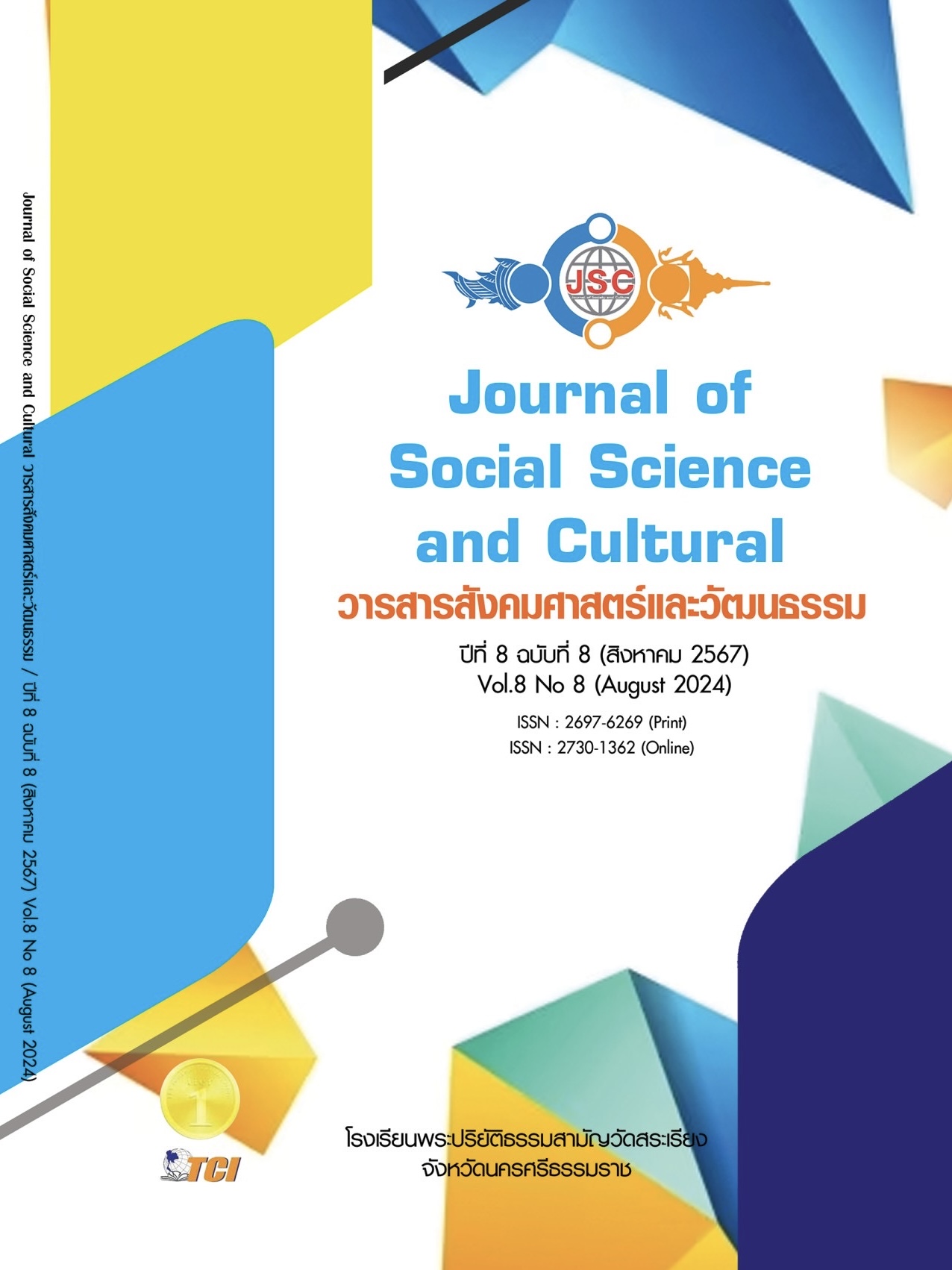DEVELOPING THE BRAND IDENTITY OF THE PRODUCT STAND TO RELAX THE MUSCLES TO INCREASE THE ECONOMIC VALUE OF THE CULTURAL BASE OF THE COMMUNITY ENTERPRISE GROUP, PHRA NAKHON SI AYUTTHAYA PROVINCE
Main Article Content
Abstract
This research aimed to 1) investigate the challenges and obstacles faced by a community enterprise producing massage mats; 2) design a brand identity for the massage mat products; and 3) evaluate the satisfaction level with the designed brand identity. Employing a research and development approach, qualitative data was collected from five key informants through purposive sampling. Quantitative data was gathered from a sample of 60 respondents, including community enterprise members, graphic designers, and interested individuals. The research instruments included a brand identity guide for massage mat products and a satisfaction assessment questionnaire. Data analysis involved frequency, percentage, mean, and standard deviation. The findings revealed that 1) the community enterprise lacked a strong brand identity, resulting in poor brand recognition, uncertainty among consumers, and product imitation. 2) The researchers designed a brand identity using a user-centered design approach, leveraging the product's identity, history, wisdom, knowledge, and beliefs obtained from the community enterprise as design guidelines. The brand identity guide included target audience information, the origin and meaning of the logo, color scheme, logo usage guidelines, spacing, typography, and organizational patterns. 3) The evaluation of the brand identity guide showed a high level of satisfaction among the respondents, with an overall mean score of 4.30 and a standard deviation of 0.50.
Article Details
References
ชัยรัตน์ อัศวางกูร. (2548). ออกแบบให้โดนใจ: คู่มือการออกแบบบรรจุภัณฑ์สำหรับผู้ประกอบการและนักออกแบบ. (พิมพ์ครั้งที่ 1). กรุงเทพมหานคร: สำนักพัฒนาอุตสาหกรรมสนับสนุน กรมส่งเสริมอุตสาหกรรม กระทรวงอุตสาหกรรม.
น้ำฝน ใจดี และคณะ. (2566). การออกแบบและพัฒนาแบรนด์เพื่อสร้างอัตลักษณ์และเพิ่มคุณค่าถ่านชีวมวล อัดแท่งของวิสาหกิจชุมชนหนองเลงพัฒนา จังหวัดชลบุรี. วารสารสังคมศาสตร์และวัฒนธรรม, 7(10), 350-363.
นิรัช สุดสังข์. (2559). ระเบียบวิธีวิจัยทางการออกแบบ. (พิมพ์ครั้งที่ 1). กรุงเทพมหานคร: โอเดียนสโตร์.
แผนพัฒนาเศรษฐกิจและสังคมแห่งชาติ (ฉบับที่ 13). (2565). ราชกิจจานุเบกษา เล่ม 139 ตอนพิเศษที่ 258 ง หน้า 12 (1 พฤศจิกายน 2565).
มะยุรีย์ พิทยเสนีย์ และพิชญาภา ยวงสร้อย. (2564). การคิดเชิงออกแบบ: ครูนวัตกรวิถีใหม่. วารสารมหาวิทยาลัยราชภัฎลําปาง, 10(2), 190-199.
วัชรินทร์ จรุงจิตสุนทร. (2548). หลักการและแนวคิดการออกแบบผลิตภัณฑ์. (พิมพ์ครั้งที่ 1). กรุงเทพมหานคร: แอ๊ปป้า พริ้นติ้ง กรุ๊ป.
ศิริวัฒน์ สาระเขตต์ และคณะ. (2565). แผนที่ศิลปะโคราช. วารสารมหาวิทยาลัยวงษ์ชวลิตกุล, 35(2), 82-96.
เอกพงษ์ ตรีตรง. (2561). โครงการสร้างสรรค์ศิลปะร่วมสมัยเพื่อต่อยอดทุนทางวัฒนธรรม. (พิมพ์ครั้งที่ 1). กรุงเทพมหานคร: เอส โอ ฟลู พริ้นติ้ง เซอร์วิส.
Duncan, T. R. (2002). IMC: Using advertising and promotion to build brands. New York: McGraw hill.
Keller, K. L. . (2008). Strategic brand management, Eaglewood Cliffs. New Jersey: Prentice Hall.
Kotler, P. . (2003). Marketing management: Analysis planning, implementation, and control. New Jersey: Prentice Hall.


